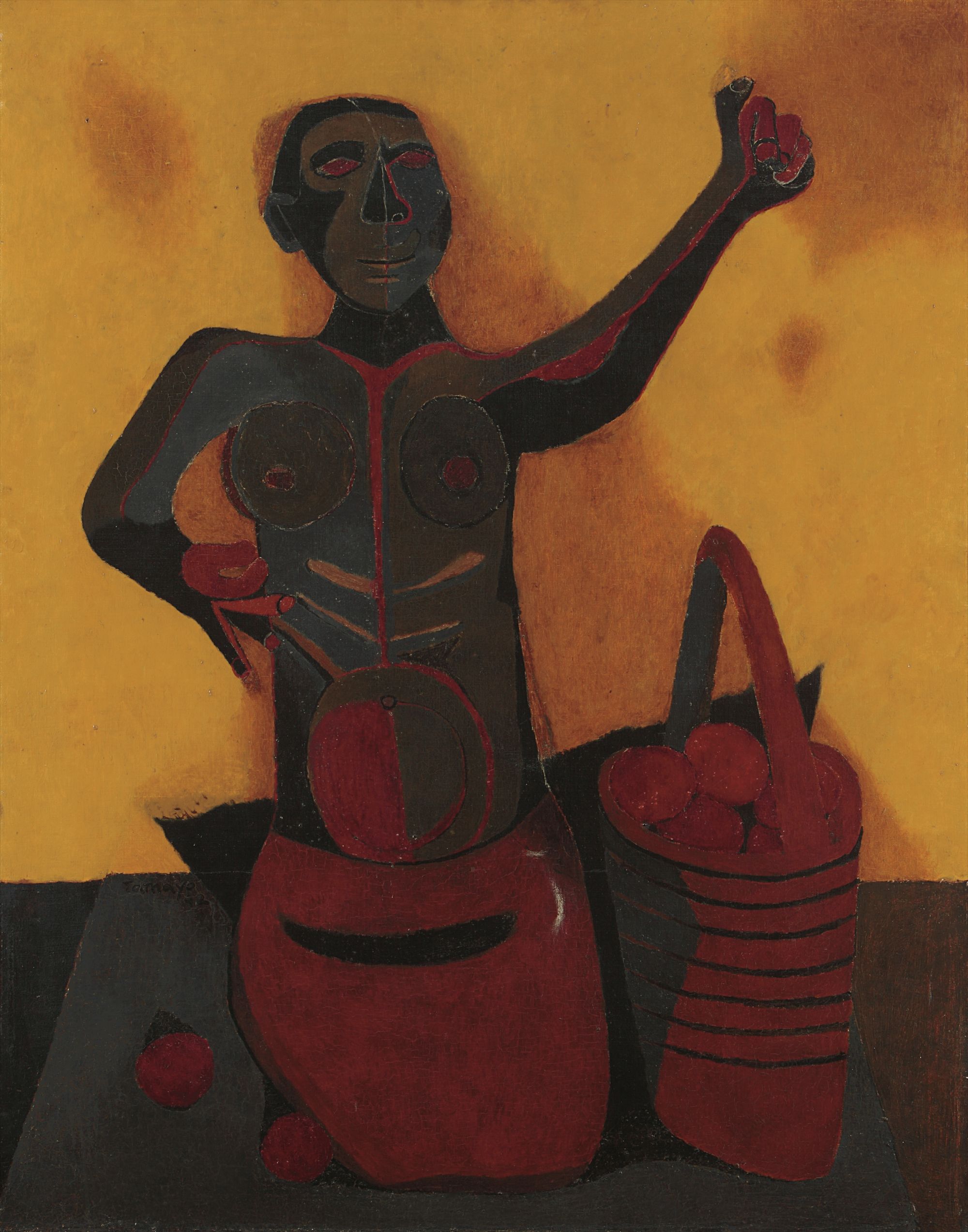

28
Rufino Tamayo
Mujer india
Full-Cataloguing
“I believe the major influence on me is the spirit of all contemporary painting; that is to say, that in my work all the problems of contemporary painting are present." Rufino Tamayo
As early as the 1920s, Rufino Tamayo had been traveling between Mexico City and New York, but by the late 1930s he had taken up a more permanent residence in New York after having one-man shows at both the famous Julien Levy Gallery and Valentine Gallery. Using a strategic blend of primitivism and modernist forms, Tamayo developed a unique vanguard that by the 1940s was becoming immediately recognizable and internationally acclaimed.
Tamayo won special status among the international avant-garde due to his Zapotec heritage and indigenous features, which served to legitimize his native vision that synthesized realism and primitive art. His life began in Oaxaca but he was orphaned at a young age, forcing him to move to Mexico City in 1917 to live with a benevolent aunt. There Tamayo first discovered his love of art, secretly sneaking of to classes at the Escuela Nacional de Bellas Artes in the morning while working in the afternoons selling fruit for the family business at the Mercado de la Merced. He came of age in Mexico during a time when “Los Tres Grandes” (Diego Rivera, José Clemente Orozco, and David Alfaro Siqueiros) dominated the Mexican art scene with their public murals idealizing the Mexican Revolution and promoting their socialist ideals. Tamayo reacted strongly against this trend, calling for a “new realism” that would produce a universal art without political intentions, drawing inspiration from the contemporary world rather than the styles of old masters.
New York City granted Tamayo exposure to international artists and modernist trends. He was undeniably influenced by Picasso, whose work he saw in New York gallery exhibitions, but Tamayo drew from many other sources of inspiration as well. By 1942, when he painted Mujer india, Tamayo had developed a unique visual style that incorporated Cubism within his deep understanding of Mexican culture, firmly grounding his work in realism while taking creative liberties in color and composition. In this particular painting, Tamayo remains true to his origins, choosing for his subject a Mexican fruit vendor. The woman’s indigenous features are prominently accentuated by the rich brown hues with which Tamayo depicts her skin color. This painting helps to explain why the artist was renowned for his exceptional abilities as a colorist, often being compared to Matisse in this regard. The deep browns, brilliant reds and striking yellow ochre create a push and pull of contrasting colors that imbue the painting with dynamic movement in an otherwise static scene.
However, this painting is much more than simply a woman selling fruit in a local Mexican market. Her body has been reduced to a series of planes, and Tamayo has instilled an element of gender ambiguity by radically simplifying the body and removing inessential elements. The woman clearly occupies a public space yet she is nude from the waste up, demonstrating Tamayo’s emphasis on the study of form and preoccupation with the human figure over creating a believable narrative scene. For Tamayo, figuration and abstraction were not mutually exclusive, and he argued passionately in favor of continuing to produce figurative art through a modern lens.
Tamayo had been interested in the human figure since his training in Mexico in the 1920s, but by the 1940s, he was beginning to break the figure into fragments, looking more closely at space and the composition of the picture by focusing on geometry and color abstraction to heighten the intensity of the image. In addition to Cubism, these technical choices have ties to pre-Hispanic and popular art, which Tamayo saw repeatedly during his youth while working as chief draftsman at the Museo Nacional de Arqueología, Historia y Etnografía in Mexico City. In this regard, there are obvious parallels with the black primitivism explored by the School of Paris; however, Tamayo utilized his own personal reality, the indigenismo of Mexico, rather than exploiting an exotic culture that was essentially foreign to him.
Tamayo’s paintings from the early 1940s, do not portray individuals but rather anonymous types in somber palettes and stoic poses, showing the pervasive fear that dominated during World War II. Despite refraining from imbuing his canvases with political messages, Tamayo was keenly aware of and passionately concerned with representing the modern world in his pictures. This unique interest in his personal heritage combined with a desire to create a universal art set Tamayo apart from the dominating artistic trends in Mexico at this time and canonized him as an artist who would influence future generations of artists, not only in Mexico but also all over the world.
Rufino Tamayo
Mexican | B. 1899 D. 1991Born in Oaxaca, Mexico, Rufino Tamayo was an incredibly prolific artist working until his death at the age of 91. Half-European and half-Zapotec Indian, Tamayo produced work that was defined by his mestizo, or mixed-blood, heritage. Through his studies, Tamayo was exposed to every artistic school of his time including Fauvism, the classical French school, Cubism and Abstract Expressionism, all of which contributed to his style as it developed throughout his life.
Tamayo reacted strongly against the Mexican muralists who dominated the art scene during his coming of age. Instead, his work is firmly grounded in realism while taking creative liberties in color and composition. His art emulates a unique blend of Cubism and Surrealism, joined with a deep understanding of Mexican culture.